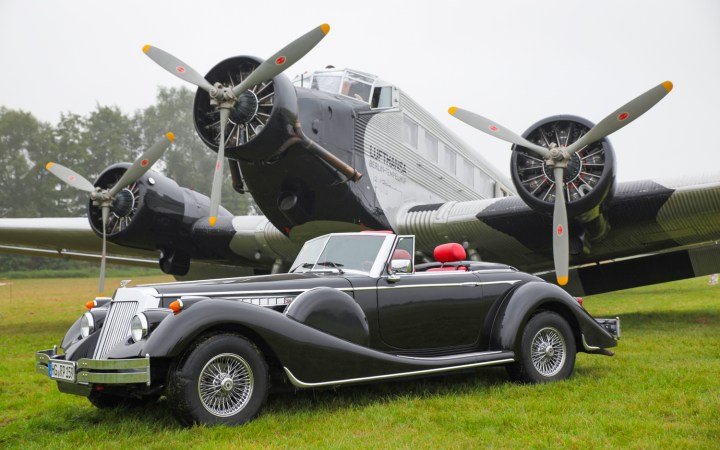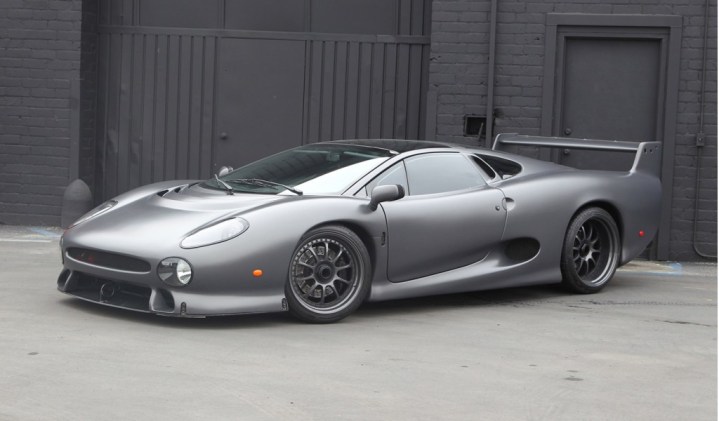
With something so rare and so excellent you’re well on your way to achieving automotive nirvana.
But there’s a loophole. The government allows us to import these cars once they reach 25 years old without regard to whether the car complies with the various rules. This is not to say it’s easy. To own one of the cars eligible for import in 2018 you will still have to fill out the right forms, and the customs people need to see a tag on the car stating the date the particular car was made. If the car doesn’t have that, you have to prove it’s 25 years old with an original sales receipt or other documentation. If you’ve got all that, you’re well on your way to achieving automotive nirvana, with something so rare and so excellent that you will be the God Emperor of Cars & Coffee.
To whet your appetite, here are five cars Americans will be able to import for the first time in 2018. Just go over to wherever they are and buy one, then ship it home. But don’t whine about the cost – I never promised it would be cheap!
1993 Jaguar XJ220-S

You could actually bring this car to America this year, because production of the fearsome XJ220-S began in 1992. But most of the 275 cars built in this small production run were made in 1993 or 1994. The XJ220 is an homage to Jag’s XJ13 prototype, built for the 1966 24 Hours of Le Mans but never actually raced. The XJ220 was originally supposed to have a V12 like the XJ13, but by the time it came to production, a twin-turbo V6 was substituted for the V12.
Purists might cue the sad trombone for the turbo engine compared to a V12, but it still made 540 horsepower and 475 pound-feet of torque. Those are respectable numbers today, and back in 1992 they were fantastic. In fact, it’s still one of the fastest cars in the world. The XJ220 will do the 0 to 60 sprint in just 3.6 seconds and will reach 212 mph.
The original concept for the XJ220 made it an AWD car, but by the time they had it ready for production, the car had the standard exotic layout of a rear-mid engine with a five-speed manual gearbox driving the rear wheels. You did get a limited slip diff, but it was a viscous coupling rather than something truly lockable.
With all that, the Jag XJ220-S was an expensive proposition in its day, retailing for £470,000, or $846,000 in 1992. The good news is, you won’t have to pay anything like that to get one today. Prices for the XJ220 have been stable around $350,000 to $450,000 for the last couple of years. Not that a few hundred thousand will make a difference for most of us.
1993 Lamborghini Diablo Strosek

Lamborghini built the Diablo from 1990 to 2001, and there are several in the United States. But the Strosek was a special edition modified by Vittorio Strosek, who thought the basic Diablo was a little too ho-hum for his tastes. Strosek changed up the bodywork to get some more aero and gave the car an adjustable wing for extra downforce.
The basic Diablo was a fire-breathing devil to begin with, boasting 485 horsepower and 428 pound-feet of torque from a 5.7-liter V12 engine. By 1993 you could get the Diablo VT with AWD and electronically adjustable shocks. The Diablo was good for a 4.5-second 0 to 62 run and had a top speed of 202 mph.
Good luck finding a Strosek Diablo for sale, but you can pick up a regular Diablo for about $100,000 to $150,000 these days. The Strosek models will be more, maybe a lot more.
1993 Aston Martin Virage Volante

The Virage Volante was the convertible version of Aston’s sexy Virage coupe. With a vestigial rear seat, the car was technically a 2+2, but only a complete schmuck would ever carry four in a car like this. The Volante was made for just you and a friend to enjoy.
Only a complete schmuck would ever carry four in a car like this.
About 230 units of the Virage Volante were made, starting in 1992. Virage Volante buyers enjoy a 5.3-liter V8 engine with 330 horsepower and 364 pound-feet of torque. The 0 to 60 run was accomplished in 6.5 seconds and top speed is about 158 mph. Buyers had a choice of a five-speed manual transmission from ZF, or a Chrysler three-speed automatic.
If you look around, you can find some of the more rare 6.3-liter hot rod editions, with 500 horsepower and 480 pound-feet of torque. The Virage 6.3 also got some wide body changes, better brakes, and 18-inch wheels.
If this scratches your Aston itch because the Vanquish S is a bit pricey, there’s some good news. Prices vary widely, especially for the 6.3-liter models, but you can pick up a Virage Volante for well under $100,000 with the basic engine. Part of the low price is that Aston had a touch of malaise in this era, and you can identify several parts that were sourced from more pedestrian cars, like that three-speed Chrysler Torqueflite automatic, or the headlights from a VW Scirocco. The steering column was a standard GM unit. There’s that sad trombone again.
1993 Alfa Romeo RZ

If you’re looking for something really weird, the Alfa Romeo RZ is about as odd as it gets. RZ stands for Roadster Zagato. It’s a two-door convertible that honestly looks like a kid’s toy, but it’s got grown-up performance and some really exciting features.
The RZ is based off the SZ coupe of the same era, and it’s equipped with a smooth 3.0-liter V6 engine inherited from the funky late-80s Alfa Milano sedans. The engine is good for 204 horsepower and 181 pound-feet of torque, and will propel the RZ from 0 to 60 in 7.5 seconds. The gearbox is Alfa’s legendary five-speed manual rear transaxle, which gives the car a near-perfect balance. The transaxle design even moves the rear disc brakes inward on the axles to reduce unsprung weight.
Just 278 RZ models were ever made, painted in red, yellow, and black. You can pick up an RZ for about $60,000 if you can find one. Some sellers are asking over $100,000 these days, but shop around for the best deal.
1993 Bancroft Roadster

If you want to get really esoteric, just six examples of the Bancroft Roadster were ever made. The car has the look of a 1930s roadster, complete with a rumble seat. The cars were built in Germany, and use the driveline from a Mercedes SL 500. You get 324 horsepower and 287 pound-feet of torque from the 5.0-liter V8 engine, and a four-speed automatic transmission.
Let’s say you actually bought one of these beauties – how do you get it from wherever it may be to your door?
It’s hard to say how much you might have to pay to get one of these, but it’ll be a lot. You have to track one down and then ask the owner. If you have a serious jones for this kind of this, you might be better off buying a Clénet.
OK, so let’s say you actually bought one of these beauties and you can’t wait to get it into your garage. How do you get it from wherever it may be to your door? You start by contacting a shipping company like Uship, which runs a service connecting people who need stuff moved with the actual carriers who move stuff around. It’s kind of like Priceline for shipping, and it even includes bids from individuals who have some extra cargo capacity in their personal vehicles. They’ve even got an app to help you out.
Getting a car from overseas has never been easier than it is now. It’s still expensive, but if you want something truly unique, this is how it’s done.


